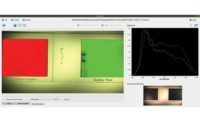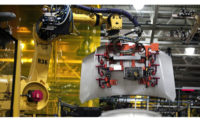It all started with the wheel. Moving things, and ourselves, across distances became easier and more efficient with the wheel. Over the centuries, we progressed from carts we pushed ourselves to wagons pulled by animals we domesticated and trained.
Then came the engine, perhaps one of the first instances of automation. The engine replaced the manual labor of humans and animals. Steam and coal-fired engines powered railroads that eventually crisscrossed the United States and with the advent of the combustion engine came the horseless carriage, the “auto”mobile.
As the years went by, not only did the automobile become lighter, faster, and stronger with innovative materials and improved engine and torque technology, but it also became more effortless to operate through automation. Manually cranked windows were replaced by power windows. Instead of a key, we unlock the doors with the push of a button and can start a car from inside our home on a cold day.
Unlocking the doors and rolling down the windows may seem ancillary to the actual operation of a car, but let’s consider the transmission. Virtually nonexistent in the United States today, outside of the niche sports cars, the manual transmission, or stick shift, depended on the coordination and skill of the operator. The driver had to “let off” the accelerator, engage the clutch, “shift” to the proper gear, disengage the clutch, and accelerate, all requiring knowledge and finesse or gears could be damaged and the car could stall. Not to mention the driver had to accomplish this while concentrating on the road, other cars, and pedestrians. With the automatic transmission, which has been around for decades, shifting is done electronically. Not to mention that we are now on the verge of a car so automated we will no longer even have to drive it, let alone shift gears, and concentrating on the road, other cars and pedestrians will be out of our hands as well.
While automation is dominating the design and operation of the automobile, it is also becoming a big part of building them, and more importantly, inspecting them. As Genevieve Diesing writes, “Intelligent factories, electric vehicles and traceability are just some of the factors that are influencing change in automotive part inspection, say experts in the field.”
So read, “Trends in Automotive Inspection” and everything else we have to offer in this month’s Quality.
Enjoy and thanks for reading!
Darryl Seland,
Editorial Director







